
Bowed Wall in Traverse City, MI Basement
While the walls in this basement were bowed, they weren't yet in the 'danger zone' that precludes wall failure, and they weren't causing any water issues. This means that we were able to reinforce them rather than excavating the soil outside to install braces and anchors.
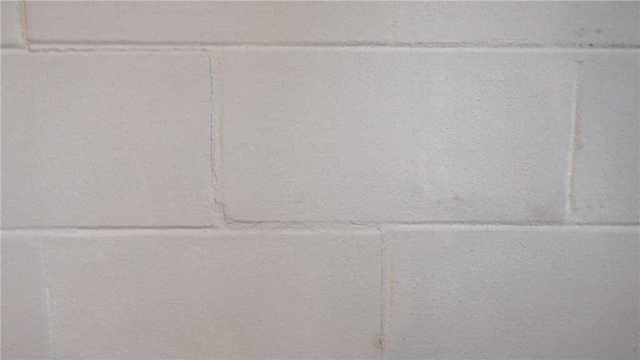
Stair Step Crack Indicative of Bowing Wall
The stair step crack in this foundation's block wall is a telltale sign of outside pressure on the wall. This happens when soil expands and shifts.
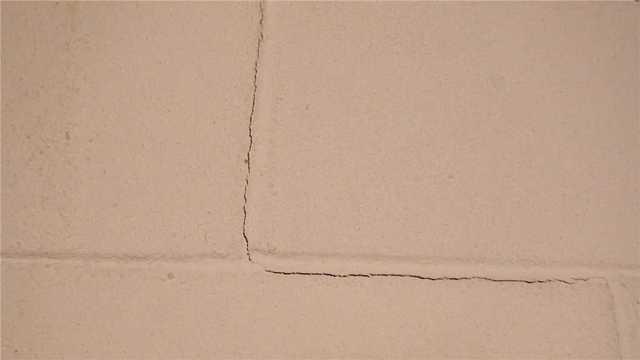
Close-up of Stair Step Crack
Cracks like this are almost always a sign of bowing or leaning walls resulting from soil pressure outside. When the soil expands and contracts as temperatures outside change, it can affect vulnerable foundation walls.
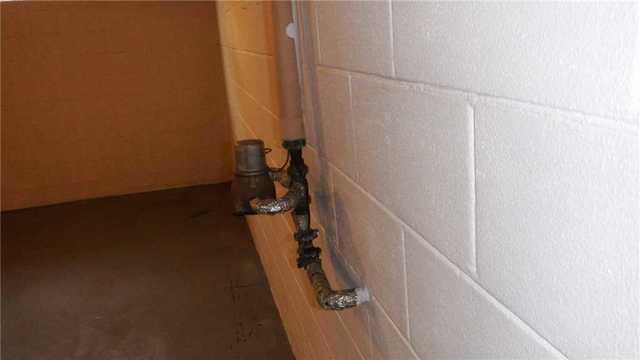
Bowing Wall Noticeable at Pipe
The bowing of this wall is noticeable when you look at it in relation to the pipe. The further up on the wall you look, the less distance there is between the pipe and the wall.
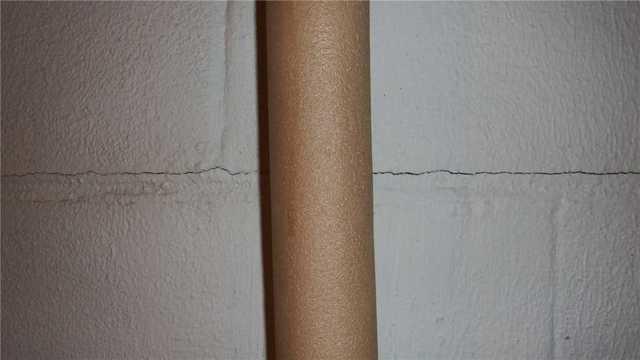
Horizontal Wall Crack at Bowed Point
This crack is at the most bowed point in the wall, which is more visible in the next photo. None of the wall cracks were leaking, which is a good sign, but is also a harbinger of future trouble if left untreated.
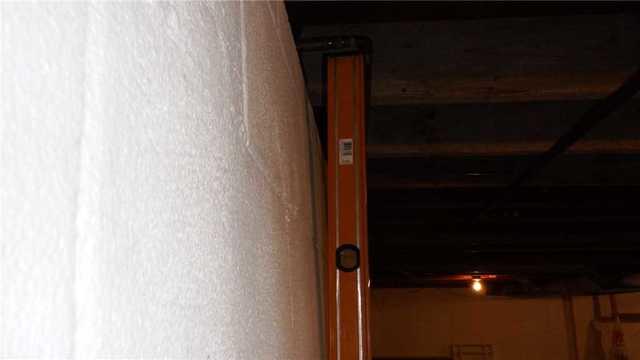
Using a Level to Gauge Wall Problems
The level is braced against the outermost spot on the wall, which allows you to see the bowing issue by measuring the gap between the top of the wall and the level.

Level Shows Bowing in Basement Wall
It can be difficult to eyeball a bowing or leaning wall, but when you bring a level into play it all becomes clear. Note the gap between the top and bottom of the wall and the level.
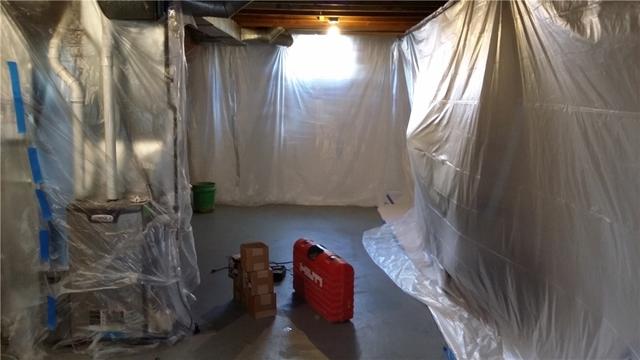
Ayers Crew Takes Extra Care
We're always conscientious to protect as much of your home and basement as possible. Here, we've draped off the center portion of the basement, since we're only working on the walls, and added an extra layer of protection around the HVAC.
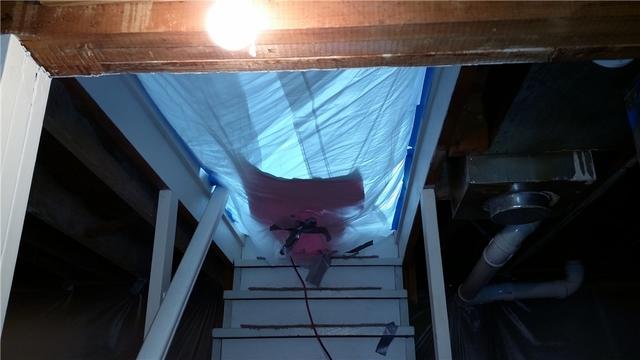
Protecting Your Home from Basement Work
We go the extra mile to ensure that your home is as protected as possible. To finish off the draping, we cover the entry to the basement entirely to minimize dust travel.
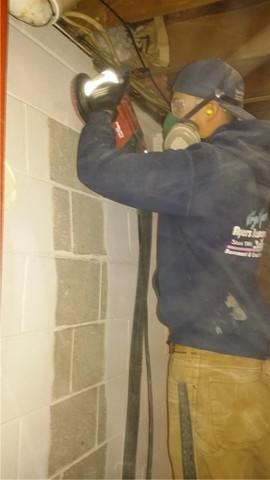
Crew Preps Basement Walls for Carbon Armor Application
One of our production crew members sands the paint off of the wall to prepare it for Carbon Armor application.
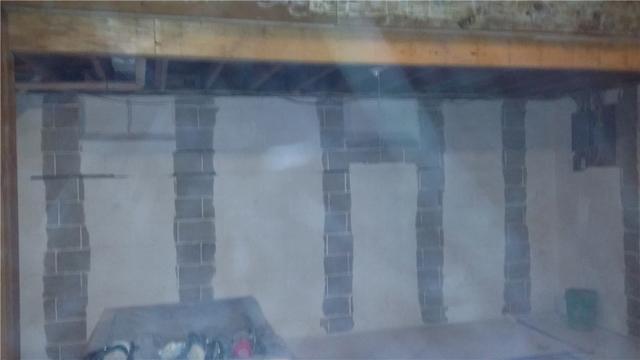
Wall Prep for Carbon Armor Straps
In order to apply the epoxy for the straps, all finishes must be removed from the wall in the application area. This wall needed a lot of reinforcement, obviously.
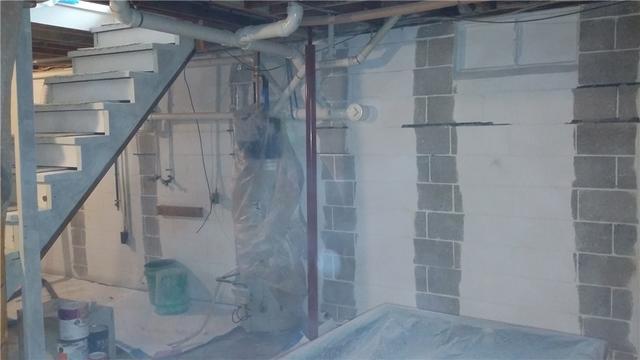
Prepped Wall Ready for Carbon Armor
With the location of each strap prepared, the wall is ready for the epoxy application.
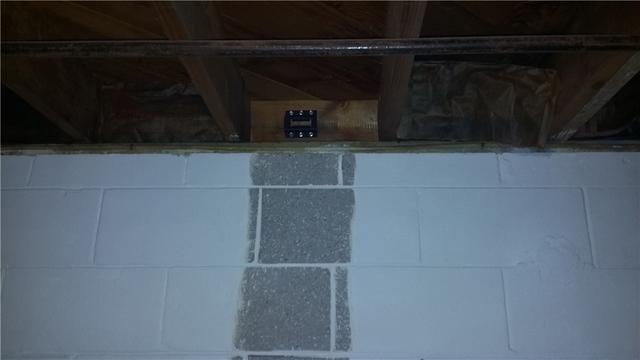
Bracket for Extra Reinforcement in Place
We tie the Carbon Armor straps into pre-positioned brackets for extra reinforcement.
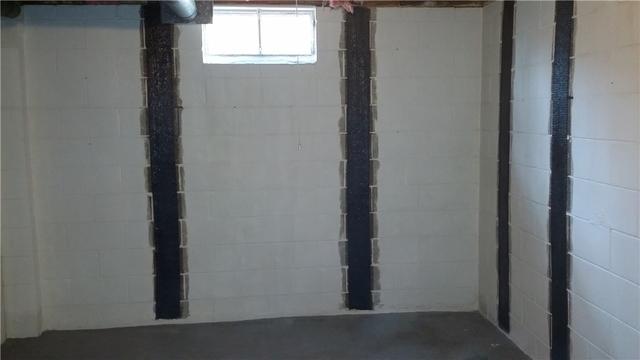
Carbon Armor Straps in Place
After the straps are placed on the first coat of epoxy resin, another coat is applied on top of the strap for extra strength.
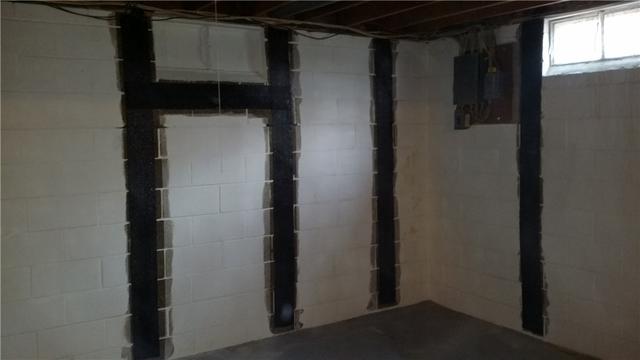
Carbon Armor Reinforces Traverse City, MI Basement Walls
Extra straps are positioned horizontally to reinforce the more advanced cracks.
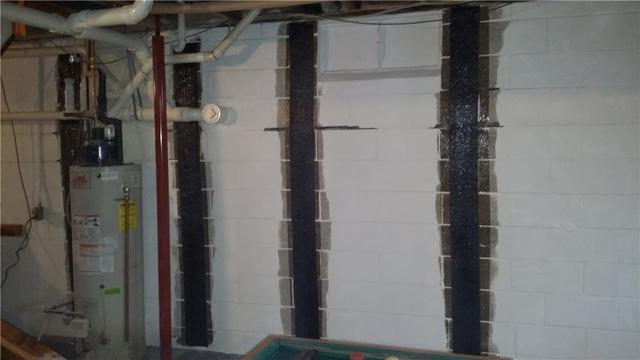
Carbon Armor Straps in Tight Situations
One of the hidden benefits of Carbon Armor straps over other reinforcement options is the ability to install them around basement fixtures with little disturbance.
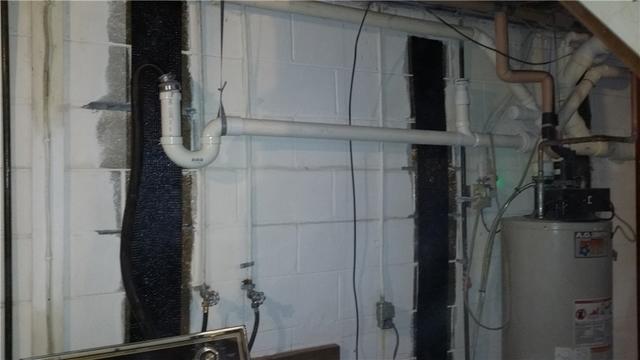
Close-Up of Carbon Armor Installation in Tight Spots
We can install Carbon Armor straps under and around existing fixtures without disturbing them.
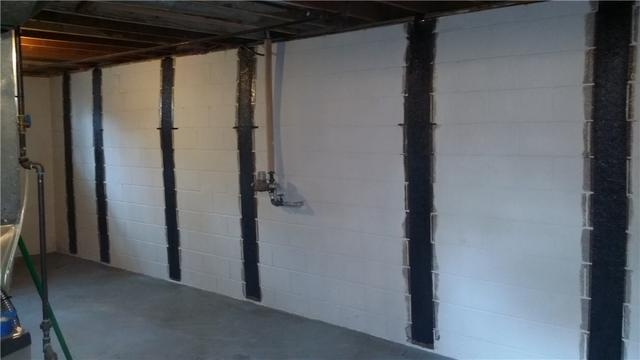
Carbon Armor on Expanse of Wall
Carbon Armor straps span the entire expanse of one of the walls.









